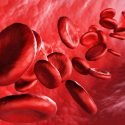The 6 Steps to Recovering from a Killer Workout
High-intensity workouts push you to your limits both mentally and physically.
These grueling workouts engage muscles you probably didn’t even know you had.
Easing into these workouts with a warm-up is a critical step in avoiding sprains, strains, and pains.
But remember, a good recovery is equally important.
Implementing an active recovery routine after each workout will reduce soreness, increase mobility, and lessen the chance of injury.
Additionally, if you’re focusing on muscle growth, it’s important to keep in mind that this growth doesn’t happen in the gym; it happens afterwards.
During lifting, your muscles suffer micro-tears and are broken down by a process known as catabolism.
The moment you stop lifting, your body begins to repair those muscles.
However, it needs your help to support this process.
If you want to get the most from each and every workout, you need to prioritize post-workout recovery.
The following six tips are designed to help you maximize recovery and produce maximum gains, while ensuring an injury doesn’t sideline your progress along the way.
Stretch It Out
Whatever you do, don’t skip the stretching.
If your goal is to add muscle, stretching may not seem that important, but it’s one of the most underrated ways to help accelerate the growth you’re looking for.
Without the necessary flexibility, you may short yourself on key muscle gains.
For example, tight ankles can prevent you from going deep enough in a squat to ensure you’re achieving the maximum benefits of the exercise.
Stretching is also great way to relieve muscular tension and help prevent some of the soreness you may experience later.
After each high intensity workout, you’ll want to cool down and get your heart rate back to normal.
You’ll also need to rehydrate.
Once you’ve done that, you can begin some static stretches and follow up with lacrosse ball, foam roller, and resistance band exercises.
Static stretching is the reach-and-hold technique.
It’s the technique of stretching and holding in a challenging position for a period of time, usually somewhere between 10 and 30 seconds for 1-2 rounds.
As you gain flexibility, you can hold each stretch longer for a deeper stretch. And remember to stretch both sides equally.
These static stretches can increase flexibility around your joints and balance out any overcompensation in your body.
Stretch big and small muscle groups, including your hamstrings, glutes, chest, and calves with this technique.
Remember that stretching should never be painful. If the stretch hurts, then you have gone too far.
Reduce the depth and build up slowly.
Ideally, stretch to the point where you can where you can feel light tension that you can hold for 15 to 20 seconds without extreme pain.
Make sure you schedule at least 20 minutes after a workout to cool down and stretch.
Building this key component into your routine will minimize the temptation to skip it.
Focus on Fascia
Following up your stretching routine by using a foam roller to target specific areas further enhances your recovery.
Using this targeted technique releases trigger points on the fascia that may be limiting your range of motion or causing nagging aches and pains.
Fascia is the connective tissue surrounding our muscles.
Combined, these are known as the myofascial unit.
Since these two are interconnected, if we stretch our muscles, we stretch the fascia surrounding them.
The same concept applies for injured muscles.
If we damage or tear them, we have damaged and torn the fascia.
Every time you work out, you are tearing muscle fibers.
It’s nothing to be scared of as that’s how you build strength, but both the muscle fibers and the fascia become tighter and shorter each time.
Picture your body as a chain.
When there is a kink (shortened muscle fibers and fascia) in the chain, it causes stress in other parts of the chain.
These kinks that develop over time make us more prone to injuries.
Foam rolling alleviates these kinks by breaking down scar tissue and adhesions that form on the soft tissue after repetitive use.
By working out these issues, your muscles and fascia will become more flexible, balanced, and efficient.
Alleviate Inflammation and Muscle Soreness
While there are competing schools of thought on the benefits of the use of ice versus heat post-workout, many experts agree a combination of both is best for reducing soreness and inflammation and ensuring your muscles properly heal between workouts.
During an intense workout, blood rushes to your muscles to deliver the oxygen and energy necessary to power the workout.
Afterwards, your muscles are inflamed and full of micro-tears.
Heat increases the blood flow and helps flush out the waste that remains as a byproduct of this process.
Ice, on the other hand, slows blood flow and reduces the inflammation, while still allowing for the waste products to be flushed.
It also helps speed the healing process and prevents further muscle damage.
Most athletes experience less post-workout soreness after a cool bath and/or using cold treatment via ice.
Note, an ice bath is not necessary. 65 to 75 degrees is enough to receive the cooling benefits.
While a hot bath may make you feel better initially to relieve pain and loosen up your muscles, it doesn’t initiate muscle healing.
Remember that heat feels very good on sore muscles, but lengthy exposure to heat, especially through the use of heating pads, is very bad for minor injuries. Avoid leaving a heating pad on sore muscles.
Keep Moving
The best way to jumpstart the healing process is through light exercise and pain-free movement, since muscle activation is needed to remove waste from the body.
In fact, the reason you’re inclined to rub or move a muscle that’s sore is because movement sparks recovery.
Do some light foam rolling or dynamic stretching rather than lie on the couch with an ice pack or soak for a long time in a hot bath.
The simple act of contracting and relaxing the muscles that surround the sore ones can help stimulate the lymphatic system and speed recovery.
Active recovery has been shown to be highly effective for reducing inflammation, soreness, and muscle fatigue.
Periods of outright rest are essential, giving your muscles a hard-earning break from the intensity of your workouts.
But some light movement will help to stimulate blood flow and improve circulation to the muscles.
For example, a session of light cardio is a great way to follow up a heavy strength training session.
Athletes who perform active recovery workouts between pairs of key workouts will become fitter than those who do not.
However, it is important to gradually work toward being able to handle the frequency of training involved so as not to push your body too far, too fast.
The most important thing to remember is that, although it may sound counterintuitive, more rest does not equal more recovery.
In fact, the worst thing you can do after a hard workout session is to sit for long periods of time.
In the context of a rigorous training program, light workouts accelerate recovery beyond what happens during outright rest.
But Don’t Neglect Recovery
Just as it’s very important to incorporate active recovery through light movement into your workout, it’s also critical to make sure you are giving your body ample recovery time in between actual sessions of intense activity.
One of the surest ways to experience injury is through overtraining and pushing your body beyond what it’s ready for.
As a general rule, you want to give yourself at least a day of rest in between high intensity workout sessions.
If you are just starting to build the intensity, you may want to start with only one high intensity workout per week to allow your body time to get used to this level of training.
Delayed onset muscle soreness is your body’s response to muscle pain after a workout.
This response sends a signal to your body to leave those muscle alone so the muscle tears can be repaired.
While that feeling often means what you are doing is working, it’s important to listen to your body.
Although some soreness is necessary to achieve the results you’re looking for, pain is a sign from the body that something is not right.
It’s possible to exercise through slight pain, but ignoring higher levels of pain or persistent pain will only result in compensations that eventually lead to other problems.
If you begin to feel burnt out or significantly drained following your sessions, or your heart rate is having trouble recovering after a high intensity workout, it may be time to dial back the training.
Allow your body to rest and recover by completing low impact cardio for a few days until you feel energized again.
Then slowly begin to add high intensity training back in, using a recovery interval that it slightly longer than what you were doing prior.
Note that the body’s natural response to an acute injury is inflammation.
This is the body’s way of protecting the injured area.
Thus, ice is usually recommended for the first 24 hours following an injury to reduce the pain and swelling.
After that, however, it’s time to find the root cause of the injury and see a musculoskeletal specialist.
Otherwise, the problem is likely to only get worse and lead to further compensation areas in other parts of the body.
Sleep is Essential
Perhaps one of the most neglected forms of recovery is maintaining a proper sleep schedule.
While the need for sleep may seem like a no-brainer, a new study from the CDC shows that 41 million people don’t get enough sleep, and about two thirds of working adults get only six or fewer hours of sleep every day.
Many studies have shown that lack of sleep increases the risk for all sorts of health problems including heart disease, obesity, and diabetes.
Emerging research also suggests that lack of sleep can play a role in musculoskeletal pain, including neck and shoulder pain.
Sleep is the necessary downtime that your body needs to restore itself.
Disturbances in sleep disrupt the muscle relaxation and healing that normally occur during sleep.
Additionally, it is well established that pain can disrupt sleep, contributing to a vicious cycle of pain disrupting sleep, and sleep problems contributing to pain.
Further, sacrificing hours of sleep over a long period of time can make you mentally weaker as well, which can in turn negatively impact your drive and focus during important training sessions.
At least seven hours is the ideal target to hit. However, many people, including athletes, may need up to nine hours to function at their optimal levels.
It’s important to find ways to make changes in your daily routine that will allow you to get to bed earlier.
For example, one really effective technique is to institute a technology blackout after a certain time in the evening (typically around 9 p.m.).
During this time, you commit to not touching any sort of technology (i.e., laptops, televisions, smart phones).
Be sure to relax before bed. Don’t do anything before bed that could get you anxious or excited.
Avoid doing work and try focused relaxation or breathing exercises.
If you can’t sleep, don’t lie awake in bed.
If you’re not asleep within 15 minutes of lying down, get out of bed and do something relaxing until you get tired.
In addition, take care not to exercise too late.
While physical activity is good for everyone, intense exercise—especially in the late afternoon and evening—can rev your body up and make sleeping at night difficult.
Try a more moderate exercise routine and make sure to do it before the evening.
Simple lifestyle modifications, combined with an effective treatment plan for addressing chronic musculoskeletal pain, can dramatically impact the quantity and quality of your sleep.
FDA Compliance
The information on this website has not been evaluated by the Food & Drug Administration or any other medical body. We do not aim to diagnose, treat, cure or prevent any illness or disease. Information is shared for educational purposes only. You must consult your doctor before acting on any content on this website, especially if you are pregnant, nursing, taking medication, or have a medical condition.
HOW WOULD YOU RATE THIS ARTICLE?





